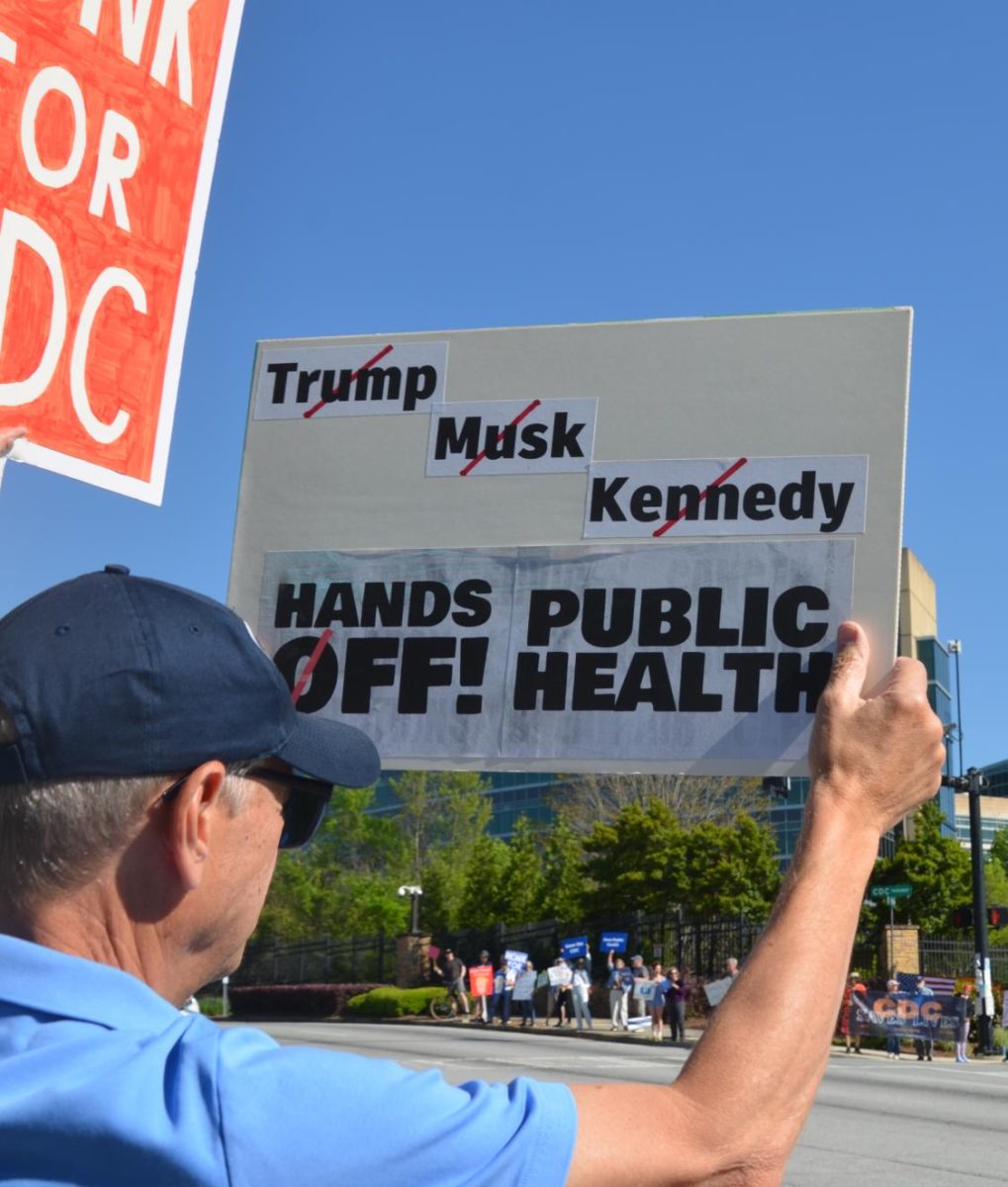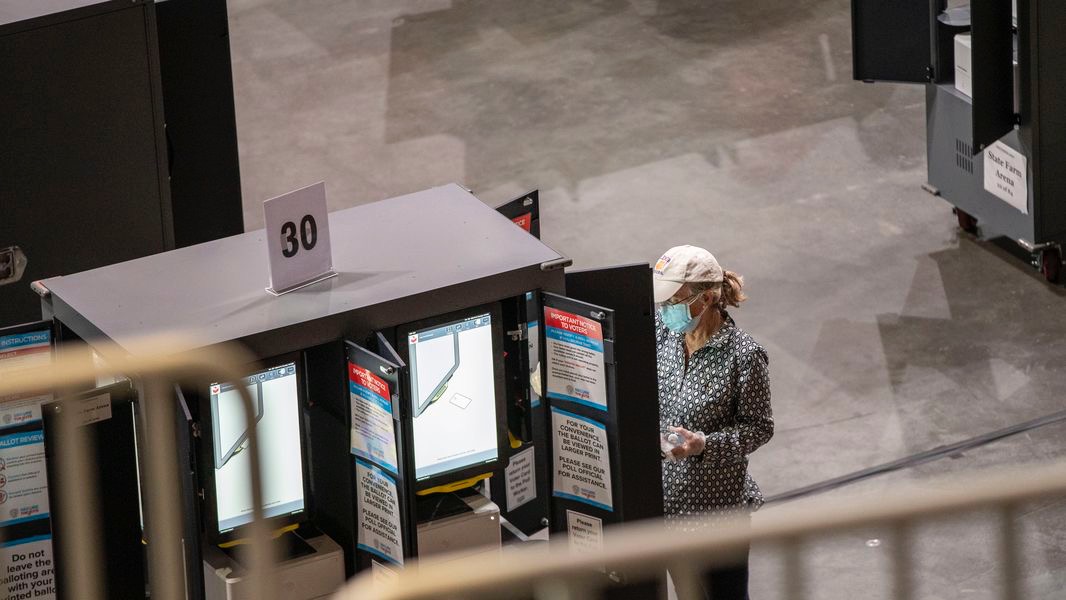

Part I. Legal Murder: A Case of Innocence
*Any unsourced information and quotes have come directly from affidavits supplied by the clemency petition filed in April of 1993.
The room was long and narrow. Its floors were concrete and its walls were made of cinderblock. The sounds of clanking metal could be heard throughout the building. Robert McGlasson sat on a metal stool bolted to the floor in a room devoid of all organic material. He was facing his client, separated by a thick sheet of glass. Holes in the glass allowed for communications between prisoner and visitor. There was a small slot below the window to pass legal papers through. Its purpose: no contact. McGlasson represented Leonel Herrera for 5 years and never touched him.
McGlasson noticed that Leo carried himself differently than most of his other clients. Leo was calm and well-spoken. ‘Mr. McGlasson,’ he would say, polite and respectful. McGlasson remembered Leo as grateful, always thanking him and his other lawyers for their work.
“The one client you never want to represent is an innocent one,” McGlasson said.
On Sept. 29, 1981, the body of Officer David Rucker was found lying next to his patrol car in Hidalgo County, Texas. He had been shot in the head at close range. Leonel Herrera’s social security card was found nearby.
Soon after the murder occurred, Los Fresnos Police Officer Enrique Carrisalez noticed a car speeding along the same stretch of road, and radioed in a description of the car and its license plates to the police station. Officer Carrisalez pulled the car over and approached the driver’s side. The driver shot him once in the chest. He lived for nine more days and identified Leonel Herrera as the driver.
The car was also identified as one Leo was known to drive, and when found, the car had human blood spattered across the hood, the left front fender, the grill, and the car’s interior. Blood was found on Leo’s jeans and inside his wallet. The blood proved to be type A. Herrera had type O, but Officer Rucker, the first victim, had type A. As of 1982, only 6 percent of the nation’s population had type A blood.
Leonel Herrera was arrested for the murders of both Officer Rucker and Carrisalez five days after they occurred, and in his pocket was a letter in which he expressed his guilt.
“To whom it may concern: I am terribly sorry for those I have brought grief to their lives. Who knows why? We cannot change the future’s problems with problems from the past. What I did was for a cause and purpose. One law runs others, and in the world we live in, that’s the way it is…What happened to Rucker was for a certain reason…He was in my business, and he violated some of its laws and suffered the penalty, like the one you have for me when the time comes… [signed Leo Herrera].”
It took almost 10 years before the courts heard the other side to the events that played out. These accounts revolved around one crucial concept: the large drug operation run by a number of high-ranking officials in Hidalgo’s police department, including the county sheriff, Brigido Marmolejo.
The Second Story
The Herrera family was closely connected with the drug trafficking. Their job was to run the cocaine and marijuana across the Mexican border. Leonel’s brother, Raul Sr. and his father ran the business, making most of the decisions and the big deliveries. They were also in charge of the collecting. Leo played a much smaller role.
“My Uncle Leonel was more like a junkie…he was very bad on the cocaine, and he spent most of the time wasted from it,” Raul Sr.’s son and Leonel’s nephew, Raul Jr., said in his affidavit.
On the day of the murders, Sept. 29, 1981, the Herrera family, including Raul Sr., Leonel, their father, and Raul Jr. who was 9 years old at the time, were at the father’s house for a barbeque along with many others involved in the drug trafficking. Sheriff Marmolejo stopped by to discuss the business as well.
Leonel, Raul Sr., Raul Jr., and Lopez, another from the operation, left after the barbeque in Leonel’s car. They stopped at several houses before heading to Norma Rodriguez’s, Leonel and Raul Sr.’s sister’s, house. Wasted on cocaine, Leo was left there.
“His nose was bleeding and he couldn’t talk right or walk straight,” she said. Leonel passed out almost instantly on the bed.
Raul Sr., Lopez, and Raul Jr. continued on in Leonel’s car. They headed towards Port Isabel where they met Officer Rucker at the rest stop off the highway. Raul Sr. got out of the car and talked briefly with Rucker before shooting him. Officer Rucker had been stealing from the business and had to be taken out.
The three of them drove off, but were stopped for speeding soon after. Officer Carrisalez was shot when he approached Raul Sr. on the driver’s side. They made a few more stops, switched cars, and headed back to Norma’s.
Norma claimed that sometime after midnight, Raul Sr. came back, very upset, and spoke through the screen door. “Dile a Leonel que tome la muleta,” he said meaning, “Tell Leonel to take the blame.”
At some point during the night, Raul Sr. stopped at his step grandfather’s, Antonio Rivera’s, house. “He was nervous and agitated,” Rivera said. He claimed that Raul Sr. told him that he had just killed two police officers and that Leonel was going to be blamed. Raul Sr. had a reputation for violence and most were scared of him. Out of fear, Rivera did not come forward with this sooner.
Raul Jr. remembered his father meeting with police officers almost every night during Leonel’s trial. Once, Sheriff Marmolejo joined the group. Raul Jr. said, “They always talked about Uncle Leonel’s trial. They were angry and they wanted to make sure my father and Uncle Leonel were not going to tell the truth about what really happened to the police officers who were killed. Police officers threatened our family. They were frightened that their drug business would be exposed.”
Leonel Herrera was convicted and sentenced to death in Jan. of 1982, at the age of 34. In 1984, two years later, Raul Sr. was arrested for the attempted murder of his wife. While talking to his lawyer, Hector Villarreal, he confessed to killing Officer Rucker and Carrisalez. He told Villarreal that he should be sitting on death row and that Leonel had nothing to do with it. While in Hidalgo County Jail, Raul told his cell mate, Franco Palacious, that he was the murderer.
“Raul was extremely depressed when we were in the jail together,” Palacious said. “One night he came to me and told me that he had many things weighing on his mind and he needed to free himself of that.”
After Raul was released from jail, he was out for only a few weeks before he was shot in the back of the neck and killed. “Leo’s case was purported to have gone down as this,” McGlasson said. “Leo is drunk and driving. He gets pulled over and shoots the cops. But now, Raul is threatening to bust everything wide open, the drug operation, the rotten sheriff and his deputies, everything. Raul tells his lawyer all about this, and only days later, is gunned down on the front porch of his house.”
Instead of vindicating his brother, Raul Sr. was buried, and Leonel remained on death row for another eight years.
Life and Death on the Row
The Ellis I Unit is a Texas Department of Criminal Justice death row prison located in Walker County, Texas, 12 miles north of Huntsville. Sitting across from Leo in its visitation room, McGlasson studied his appearance. Leo wore the same white jumpsuit as all other death row inmates, yet he was well-kept and had a sense of self-respect. His hair was short and neat. His voice was deep and he articulated every word.
“How are you not going nuts crazy?” McGlasson remembered thinking. Later, he realized Leo was doing the honorable thing in sacrificing himself for his family. McGlasson described Leo as very calm, almost regal, especially for an innocent man on death row.
After they were done conversing, the guards would place the chains on Leo to escort him back to his cell from the visitation room. Leo wore handcuffs, a waist chain, and feet shackles. The sounds of metal on metal echoed throughout the hall.
Leo’s cell was small. He lived in an 8-by-12-foot room for approximately 23 hours a day in solitary confinement. The walls were concrete. There was a steel bunk bed with a very thin plastic mattress and a pillow, items which you could trade out only once a year. There was a steel toilet and sink, and a small shelf to write and eat on.
Anthony Graves was wrongfully convicted of murder and sentenced to death in1992. He spent 18 years behind bars at Ellis I Unit before being exonerated. He spent 10 of those 18 years in solitary confinement. Graves provided testimony before the courts about the torture that death row inmates suffer through.
“I will watch guys come to prison totally sane,” Graves said in his testimony. “And in three years they don’t live in the real world anymore. I know a guy who was sitting in the middle of the floor, rip his sheet up, wrap it around himself, and light it on fire.”
Many inmates were sleep deprived because of the constant clanging of metal or because of the screaming and hollering of another inmate who had lost his mind. There was a small window at the very top of Graves’s cell. But in order to see the sky through it, he had to roll up the mattress and stand on it.
McGlasson and Leonel’s other defense attorneys, Mark Olive and Phyllis Crocker, gathered affidavits from Raul Jr., Norma Rodriguez, Antonio Rivera, Hector Villarreal, Franco Palacious, and a few other witnesses, all of whom took a polygraph to guarantee their honesty.
On Feb. 16, 1992, 10 years after his conviction, Leonel Herrera filed an appeal in federal habeas courts, claiming that newly discovered evidence proved his innocence of both the murders of Officers Rucker and Carrisalez. In his petition, he asserted that his now-deceased brother, Raul Sr., committed the murders and that the Eighth Amendment’s prohibition against cruel and unusual punishment and the Fourteenth Amendment’s due process guarantee therefore forbid his execution.
The Fifth Circuit denied his claim on Jan. 25, 1993. The Supreme Court decision stated, “The defendant has been afforded a fair trial and convicted of the offense for which he was charged, the constitutional presumption of innocence disappears. Federal habeas courts do not sit to correct errors of fact, but to ensure that individuals are not imprisoned in violation of the constitution.” In other words, being wrongfully convicted, standing alone, is not a violation of your rights and therefore cannot be appealed in the federal courts by the means of the writ of habeas corpus. Most habeas appeals are based on unconstitutional procedures during the trial and not on pure questions of innocence.
On April 30, 1993, McGlasson, Olive, and Crocker petitioned for clemency to the governor of Texas at the time, Ann Richards. The petition was denied, also on the grounds that the evidence did not meet a satisfactory standard. The evidence provided was solely in affidavits, which were presented eight years after trial and ‘conveniently’ placed the blame on a dead man.
There was no proof at the time that a drug operation existed within Hidalgo law enforcement and that Sheriff Marmolejo was corrupt. Leonel Herrera’s execution date was set for May 12, 1993. Marmolejo, however, would be indicted on bribery, money laundering, and racketeering charges no more than a year later, but too late to provide any relief for Herrera.
On the day of an inmate’s execution they are transported from Ellis I Unit to the Huntsville Unit, which houses the state’s execution chamber. This prison is commonly known as “Walls Unit”, due to the massive redbrick structure surrounding it. The inmate is placed in a cell about 30 feet from the door to the execution chamber.
The execution chamber in the Walls Unit is a 9-by-12-foot room with turquoise walls. A gurney sits in the center of the room where the inmate is strapped down, legs straight, arms spread out as if nailed to a cross. There are two rooms on opposite sides, each with a window into the execution room. One is reserved for the family of the victim(s). The other is for the family of the condemned.
“The whole purpose of your death if you’re condemned is for the community to tell you that you are not worth living, that you cannot be redeemed, that you are not to be forgiven, that you are not a worthy person,” McGlasson said of the context surrounding an execution. “It’s such a clear message of unworthiness.”
Leo did not want his legal team to watch his execution. Rather, he asked them to continue working on his appeals up until the last minute, so his lawyers remained at their offices in Houston. While Leo sat in his death-house cell, 30 feet from where he was to be killed, he stayed on the phone with his lawyers. “The whole team was kind of rotating in and out, talking to him,” McGlasson said.
“With Leo, he was really grateful, he was thanking us. He would say things like, ‘don’t give up’…I know he wanted to be clear with me that it was not a false fight. Now that he was getting ready to leave this world, he wanted to reassure me and the others on the team that what he told me was absolutely the truth.”
In 1993, 36 states used the death penalty, lethal injection being the primary method of execution. When this method is employed, monitors are set in place to observe the inmate’s heart. Two needles are inserted into usable veins in the person’s body. Long tubes connect the needles with several drugs. At this point any curtain shielding the inmate from the view of spectators is withdrawn.
At the time of Leo’s execution, the drugs used for lethal injection were a three-drug “cocktail.” The first solution is an anesthetic, sodium thiopental, which induces a deep unconsciousness. Its purpose is to prevent the person from experiencing any pain. Then flows the pavulon or pancuronium bromide, which paralyzes the person’s entire muscle system and stops their breathing. The third drug, potassium chloride, stops the heart.
In his last words, Leo said, “I am innocent, innocent, innocent…I am an innocent man, and something very wrong is taking place tonight. May god bless you all. I am ready.”
Part II. Death Row’s Defense
Robert McGlasson now resides in Candler Park where he spends a lot of his time writing and exercising. With all of his travels, however, he is only in Atlanta, on average, three weeks out of the month.
A Yale Law School graduate, McGlasson has been a lawyer working on death penalty cases for roughly 30 years. He founded the Texas Death Penalty Education and Resource Center, otherwise known as the Texas Resource Center, an organization that strives to repeal the death penalty and educate the public and policymakers about capital punishment and its alternatives.
In the last three or four years, McGlasson has freelanced for the nonprofit organization, Reprieve. Based in London, this coalition provides legal support worldwide and aims to protect the right to a fair trial. In doing this, McGlasson has traveled to Pakistan to advocate against the death penalty and to educate lawyers to help them better represent their clients. Pakistan has not had any executions since 2008. The new regime under President Mamnoon Hussain, however, is revitalizing the death sentence.
“It’s making it all the more important now that we get in there and train lawyers and activists so that we can prevent a mass resurgence of executions,” McGlasson said. Most people sitting on death row in Pakistan, Thailand, Malaysia, and Indonesia are not murderers. “A lot of people are getting the death penalty there for drug trafficking,” he said. He plans to return to Pakistan in November.
McGlasson’s constant traveling often makes it difficult for him and his teenage daughter, Ellie, to stay in contact. “Calling him was an issue because of the time zones,” she said. “I was also worried about him when he was in Pakistan.”
Most recently, McGlasson has become a senior mentor in his field.
“What I find myself doing a lot is working with younger lawyers who are quite inexperienced,” he explained. McGlasson works with them, both as an advisor and as a collaborator, and is really enjoying it.
Not only does he work on death row cases, but McGlasson spends a good portion of his time campaigning against capital punishment. “Ultimately, I think it’s a failed policy,” he said. “There is no rational proponent now favoring the death penalty, making any other argument for it, except for vengeance.”
McGlasson continues to explain. “Not only would I never want to be in the position of pulling the switch or voting to pull the switch, I don’t think we should be putting other people in that position, and I think that when we ask jurors to make these decisions, we are doubling the trauma we are inflicting on our society.”
McGlasson has worked on many well-known cases from Atlanta, including the Brian Nichols case in 2008. Beyond his death penalty work, McGlasson runs, rides his bike, writes, and hangs with his daughter Ellie.
“We love to play really crappy teenage music,” he said. “And, we dance to it. She dances really well. I on the other hand, embarrass her and myself apparently. Although, I’m oblivious by trying to act like I know how to dance.”
Ellie and her father also enjoy watching movies together. “We have a whole movie collection,” Ellie said. Still, McGlasson’s tendency to argue a point carries into his home life, especially when selecting the film.
“We’ll sit there and try to convince the other why we should agree,” she said. Sometimes it takes them an hour to decide.
“He’s undoubtedly very intelligent,” Ellie noted. “It’s very hard to change his mind. It makes family dinner very interesting.”
For the past few months, McGlasson has decided to write creative pieces surrounding his work. “I’ve got a lot of memories and experiences, some of them fairly unusual if not unique.” He has taken his passion for writing and formed a small group here in Atlanta, called ‘The Dead Poets Society’ after the 1989 film.
This group meets about once a month to work, read, and discuss their writing. “We’ve met three times now and everyone seems to be getting a lot out of it,” McGlasson said.
A good friend of McGlasson, Dr. Bill Thomas describes him as intellectually curious. “As a friend, I trust his judgment. I trust his word,” he said. Thomas has known McGlasson for many years and has come to admire him for his work ethics.
“He’s very dedicated to his work,” he said. “It has to be frustrating to know that you are more likely to lose your cases than win your cases, and when you lose your cases, you lose a person’s life.”





![Lamar Young [right] stands with fellow counselors. Young served as a counselor for 15 years at Midtown, providing critical support for students and parents.](https://thesoutherneronline.com/wp-content/uploads/2025/04/IMG_3800-1-1200x584.jpg)
